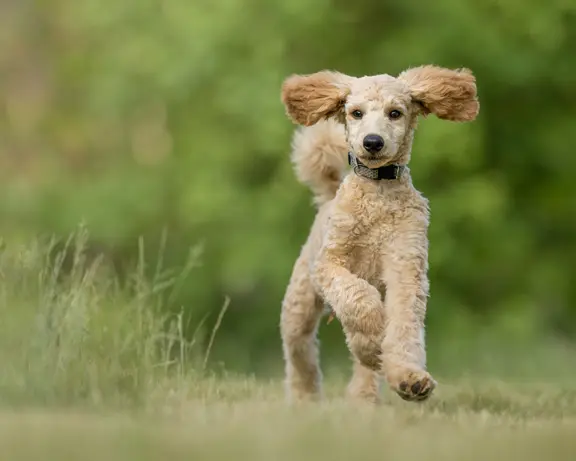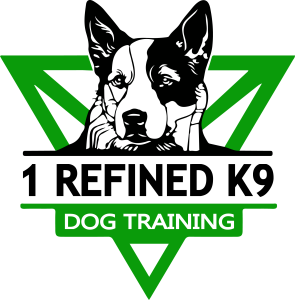Handling Your 2 Year Old Dog Over Excited Behavior
Is your 2 year old dog’s endless energy draining you? Dealing with hyperactive behavior in adult dogs can be tough. But, with the right steps, you can bring peace back to your home. As someone who loves pets, I’ve found that knowing why dogs get hyper is crucial. It helps you make your dog happier and calmer.

Key Takeaways
- Lack of attention and exercise can contribute to hyperactivity in dogs.
- Obedience training is essential for regulating a dog’s behavior.
- Dogs require both physical and mental stimulation to thrive.
- Professional dog trainers can provide valuable guidance and tools.
- Positive reinforcement techniques are effective in promoting good behavior.
Understanding the Root Causes of Dog Hyperactivity
Managing your 2-year-old dog’s over-excited behavior starts with knowing why it happens. Puppy energy, lack of mental stimulation, and anxiety can all lead to hyperactivity. By spotting the signs and tackling the main issues, you can help your dog find a better balance.
Signs of Excessive Energy in Adult Dogs
If your dog can’t calm down, has trouble focusing, or barks and jumps too much, they might be too energetic. Such behaviors usually lessen with age and proper training, often by 6 to 9 months. But, in some cases, a condition like ADHD in dogs might need vet help.
Impact of Mental Stimulation on Behavior
Not getting enough mental challenges can make your dog too excited. Games, puzzles, and training can really affect their behavior. Giving your dog regular brain workouts can help them use their puppy energy well.
Role of Anxiety in Hyperactive Behavior
Anxiety can also make your dog too active, especially in new places. Feeling too excited or on edge can show they’re anxious. Knowing how your dog acts and what makes them anxious can help fix their hyperactivity.
Understanding why your 2-year-old dog is hyperactive is key. Knowing about excessive energy, the need for mental stimulation, and anxiety helps you create a good plan. This plan will help your dog be their best self.
How to Recognize When Your 2 Year Old Dog Over Excited Patterns Begin
It’s important to spot early signs of excitement in your 2-year-old dog. Look for intense focus, not listening to commands, and being very alert. Watch how your dog stands, looks at you, positions their ears, and sounds. These signs can show when they’re getting too excited.
When you see these signs, it’s time to step in. Early action can stop your dog from getting too excited and losing control. This way, you can guide their energy into positive activities, making them a calm and happy pet.
1 Refined K9 Dog Training, we know how hard it is to handle a very excited 2-year-old dog. Our skilled trainers offer personalized help to spot and handle these signs. With our help and a plan made just for your dog, you’ll learn how to manage their energy. This will make your home a peaceful place.
Your dog’s happiness and your peace are what we care about most. By being alert and acting fast, you can stop those excited moments. Call us today at 386-478-9584 to book a consult. Start working towards a calmer, more obedient 2-year-old dog.
Essential Training Techniques for Managing Dog Energy
Managing your dog’s energy is key for their happiness and your home’s peace. At 1Â Refined K9 Dog Training (386-478-9584), I’ve seen how good training can change a hyperactive dog into a calm friend. Let’s look at some important ways to help your two-year-old dog use their energy well.
Positive Reinforcement Methods
Positive reinforcement is a strong tool in impulse control training. It rewards good behavior with treats, hugs, or toys. This method strengthens your bond and makes training fun for both of you.
Impulse Control Exercises
Teaching your dog impulse control exercises, like “wait” or “leave it,” helps them control their reactions. These exercises teach self-control and patience, so your dog waits for your okay before doing fun things.
Leash Training Strategies
Good leash training is vital for walks and social times. “Leash detox” helps your dog focus on you and stay calm, even in busy places. Always train consistently and stop activities when your dog gets too excited.
Using these training methods can help you manage your dog’s energy and make them a well-behaved friend. Remember, patience and regular practice are essential for lasting success. For extra help, contact our team at 1 Refined K9 Dog Training for personalized advice.
Creating an Effective Exercise Routine for Your Dog
Keeping your dog’s energy levels in check is key to their health. It’s important to mix physical and mental challenges in their daily routine. Activities like obstacle courses and hiding treats can keep their body and mind active.
When planning your dog’s workout, think about their breed, age, and energy level. Some dogs, like Labradors, need lots of exercise. Others, like Brachycephalic dogs, might prefer gentler activities. Tailoring the routine to your dog’s needs ensures they get the right amount of activity.
Being consistent is crucial for a good exercise plan. Set a daily schedule for activities to find the right mix of intensity and duration. This balance helps keep your dog calm, happy, and well-behaved.
At *Refined K9 Dog Training*, our trainers can craft a custom exercise plan for your dog. We help meet their physical and mental needs, and address any behavioral issues. Call us at #86-478-9584 to learn more about our dog training services.
Mental Stimulation Games and Activities
As a pet owner, I know how vital it is to keep my 2-year-old dog’s mind sharp. Boredom can cause bad behavior, so I seek out fun activities. These range from indoor games to outdoor challenges, all designed to keep my dog’s mind active.
Indoor Brain Games
On rainy days, I turn to indoor games to keep my dog’s mind sharp. Scent games, where I hide treats for my dog to find, are a hit. Puzzle toys that challenge problem-solving skills are also excellent for mental stimulation.
These toys help my dog use their natural hunting instincts. It reduces anxiety and compulsive behaviors.
Outdoor Mental Challenges
Outdoor play is crucial, but I also add mental challenges to our outings. Simple agility courses or tracking games that test their senses are rewarding. These activities exhaust my energetic pup and strengthen our bond.
Interactive Toy Recommendations
At home, I use a variety of interactive toys to keep my dog’s mind active. Snuffle mats and treat-dispensing puzzles are perfect for keeping them busy. I switch toys regularly to keep things exciting and prevent boredom.
By adding these games and activities to my dog’s daily life, they stay engaged, confident, and joyful. It’s a win-win for both of us!
The Role of Consistent Daily Structure
Having a daily routine is key for dogs. It makes them feel safe and know what to expect. A set schedule helps cut down on anxiety and hyperactivity. My 2-year-old Australian Shepherd, Indy, shows how good a dog routine is.
When Indy’s dad left for 8 weeks, we needed help with Indy’s behavioral consistency. Indy was always on edge, reactive on walks, and even aggressive to other dogs. A consistent daily plan greatly improved Indy’s behavior in just a month.

At first, we kept training short, just five minutes, four times a day. This helped Indy get used to the new schedule without feeling stressed. We also started him wearing a muzzle to manage his biting. Plus, we gave him fun activities like scent games and puzzle toys to keep his mind busy.
Watching Indy closely and tweaking the routine helped us find what worked best for him. In a month, Indy could relax for 15 minutes without getting into trouble. A consistent daily structure is a big help for dogs like Indy. I suggest it to all dog owners.
Managing Excitement During Walks and Social Interactions
As a dog owner, it’s important to manage your pup’s excitement. This is for their safety and the safety of others. Teaching them socialization skills and leash behavior helps them feel confident in public.
Leash Behavior Modification
Teach your dog to stay calm on walks. Use positive reinforcement to help them walk by your side. With patience and practice, they’ll learn to behave well on a leash.
Social Exposure Training
Start your dog’s social training slowly. Introduce them to new people and animals in a safe place. Use treats to keep their focus. As they get more comfortable, you can increase their exposure.
Public Space Etiquette
Keep your dog under control in public. Teach them to walk calmly on a loose leash. Use treats to distract them if they get too excited. Teach kids how to interact with dogs safely too.
Training your dog in socialization skills, leash behavior, and public etiquette is key. With consistent training, your dog will enjoy safe and fun outings. Remember, patience and persistence are essential.
Environmental Factors Affecting Dog Behavior
As a dog owner, it’s important to know how our dogs are affected by their surroundings. Things like noise, other animals, and new places can change how they act.
Studies show that aggression is a big problem in dogs, making up about 70% of cases at vet offices. It’s key to stop aggressive behavior early, as most dog bites come from it. Also, many dogs get excited easily, whether they’re in shelters or with owners.
Our feelings can affect our dogs too. If we’re too excited, our dogs might get anxious. Keeping our homes calm and controlling what they see can help them stay calm.
Slowly introducing our dogs to new places can help them feel less stressed. This, along with regular training and a daily routine, can really help with their behavior. With patience and the right steps, we can help our dogs deal with their surroundings better.
Professional Training and Support Options
If your dog’s over-excited behavior doesn’t improve with training, it’s time to get help. Certified Professional Dog Trainers (CPDTs), Applied Animal Behaviorists, and Veterinary Behaviorists can help. They offer the expertise and guidance your pet needs.
When to Seek Expert Help
If your two-year-old dog is still too hyper or excitable, it’s time to call a pro. A professional dog trainer or animal behaviorist can find the root cause. They’ll create a plan to manage your dog’s behavior.
Types of Professional Training Programs
There are many professional training options. You can choose group classes, private sessions, day training, or board-and-train programs. Group classes teach basic manners. Private sessions are best for specific behavior issues. Day training and board-and-train offer intense, one-on-one training.
Cost Considerations and Benefits
Professional training can greatly improve your dog’s behavior and your bond. Costs vary, but the benefits are worth it. For example, 1 Refined K9 Dog Training offers programs for over-excited dogs. They tailor their services to your pet’s needs and your goals.
